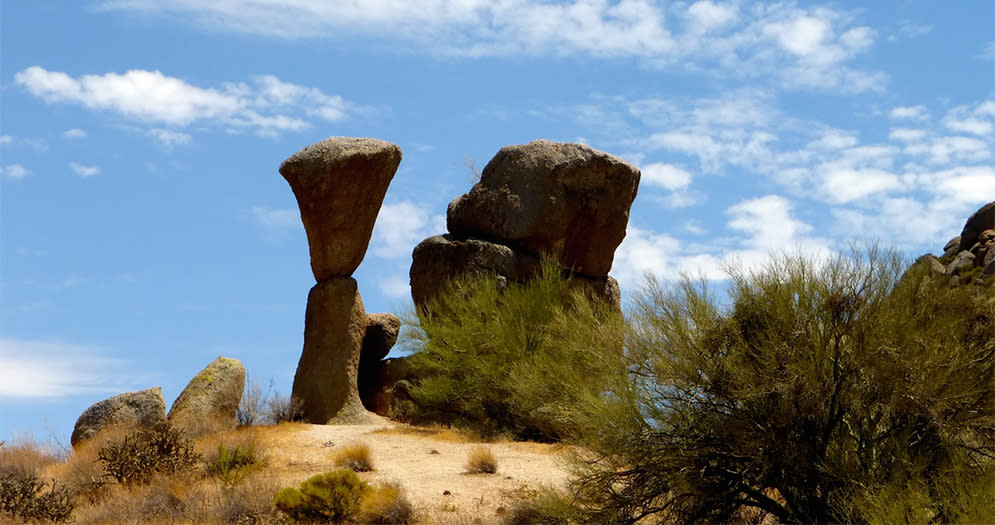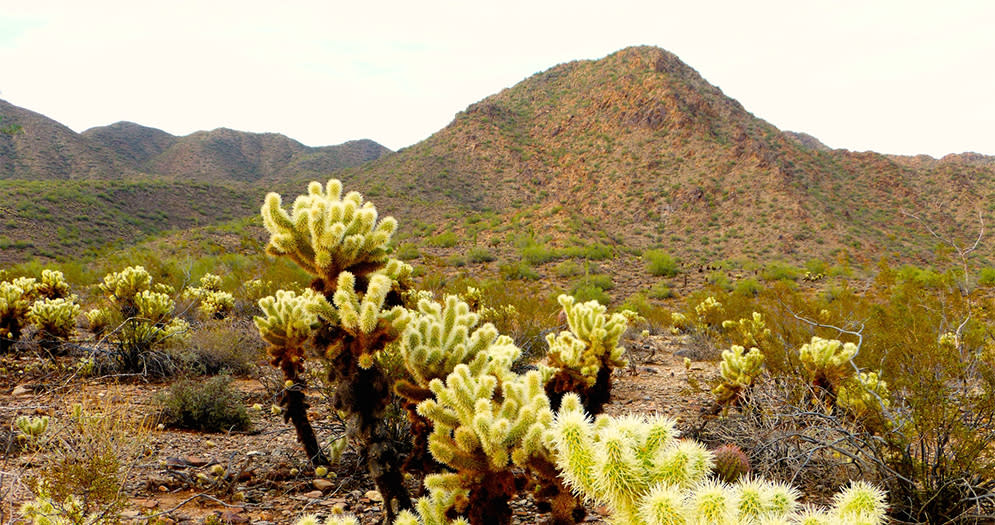I’m hiking in an impossible place, one that shouldn’t exist.
I’m walking across desert that should have vanished years ago. Yet instead of traffic noises, I hear a chorus of birdsong. Mighty saguaros rise overhead, not buildings. My views of hard-boned mountains marching towards the horizon are unobstructed. Cactus and stone, sky and cliffs are all I see.
Welcome to Scottsdale’s McDowell Sonoran Preserve—the city’s utterly impossible and truly unforgettable backyard.
Many cities pay lip service to quality of life issues. Some even go so far as to carve out a few strategic buffers of open space. The epic scale of what Scottsdale set aside, however, is virtually unprecedented.

It began with a few passionate activists. They formed the McDowell Sonoran Conservancy and fought to protect the mountains and desert of North Scottsdale, most of which was private land ripe for development. The grassroots effort continued to expand despite overwhelming odds. Political leaders got on board and Scottsdale residents voted not once but twice in favor of a sales tax increase to raise money to purchase land. The result is the largest urban preserve in the United States, a crown jewel of city planning and a reminder that just a few determined people can make a difference.
Established in 1995, the McDowell Sonoran Preserve encompasses more than 30,500 acres. That’s larger than the entire neighboring city of Tempe. Thanks to the concentrated efforts of the community, a full one-third of Scottsdale remains pristine, public open space.
Visitors to the Preserve will discover a land of soaring mountains, boulder-crowned mesas, storm-carved arroyos and cactus as tall as office buildings. More than 225 miles of shared-use trails, departing from multiple trailheads, delve into the outback exposing the scenic wonders of a rugged frontier.
Although it’s a single connected land area, the Preserve can be broken into two distinct regions. The southern half consists of the McDowell Mountain range and is served by three major trailheads: Lost Dog in the south, Gateway in the middle and Tom’s Thumb on the north side.
The northern half of the Preserve is flatter, a landscape of rolling desert hills, but is marked by five standalone mountains: Cone, Brown’s, Cholla, Granite and Fraesfield. The primary trailheads in the north region are Brown’s Ranch, Fraesfield and Granite Mountain.

I fall more in love with this wild desert each time I go. Recently, I spent a weekend hiking in the McDowell Sonoran Preserve. Here are a few of my favorite moments.
-
As soon as I set foot on the Ringtail Trail I noticed I was walking through the densest grove of teddy bear cholla I’d ever seen. Growing like little hobbit-sized trees, the teddy bear is a sly insidious cactus. The plant bristles with such a proliferation of spines it appears fuzzy, yet each thorny pad breaks off at a whisper of movement. So prone to latch on to anyone who gets close, they’re often called “jumping cholla.” Yet they can be absolutely dazzling, catching the sweet light at dawn and dusk and radiating a shimmering aura from their golden spines.
-
While pausing at the saddle on Gateway Loop to enjoy expansive views, I was suddenly serenaded by a mournful melody of coyote yips. I stood alone in the desert listening to the call of coyotes. Much to my surprise, I understood what they were saying. Because some days we all miss the moon.
-
Stopping to read the signs along the stunning Marcus Landslide Trail I began to comprehend the massive, mountain-peeling avalanche of rock that took place here a half-million years ago. And then to walk among the clutter of boulders that comprise the landslide and see the mile-long path they traveled in this quiet corner of desert is incredibly poignant. I’m fascinated by the geological forces that shape this land, which would make every science teacher I had palm-slap their foreheads since I slept like an astronaut in deep space stasis through their classes.
-
Descending from Sunrise Peak I was dazzled at the opposite end of the spectrum by a sunset. It was one of those complex, lavish and scandalous affairs. The sun goes down in Arizona like everywhere else but it does not go quietly. This was a fiesta of explosive color and reckless light. Columns of clouds went up in flames. All around me mountaintops turned purple, saguaros arose like lean shadow giants and a golden light flooded the land. Amid this bloody revolution, a feeling of utter serenity descended. Despite the chaos, it is a peaceful quiet time. The day was done but it ended with a wild flourish. I’m grateful I got to see such an impossible sight from this impossible place.
Roger Naylor is an Arizona travel writer and author. His latest book is Arizona State Parks: A Guide to Amazing Places in the Grand Canyon State. He is a member of the Arizona Tourism Hall of Fame. For more info, visit www.rogernaylor.com.





